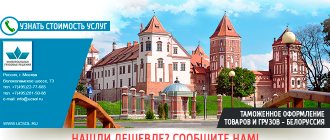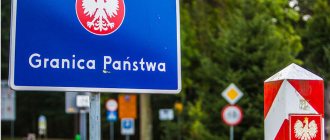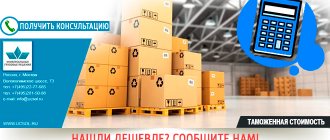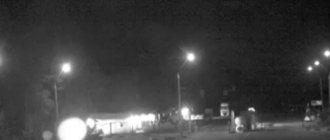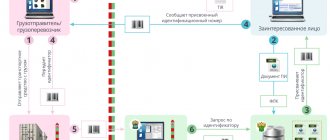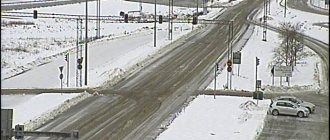Latvia is one of the most interesting Baltic states for Russians. Beautiful sandy beaches, legendary dunes and traditional festivals have encouraged tourists to visit this country for several decades in a row. With the Christmas holidays approaching, people crossing the border by car are again faced with a traditional problem - a queue at the border.
During closed borders, only those foreigners who have an official opportunity to live in this country can come to Latvia.
What does permanent residence permit give to Latvia?
- Gives you the opportunity to live, work, and study in any EU country.
- Registration 2.5 months.
- For citizens of Russia, Ukraine, Belarus and other CIS countries.
- The cost of registration is 4500 euros.
- Permanent residence permit is indefinite, the card is valid for 2 years, it can be extended at any consulate of Latvia.
- There are no residency requirements.
- Children check in with a parent for free.
Contact and write: +7 (985) 522-05-05 (phone, WhatsApp, Viber) to the visa center 100viz.com, which has been working with European countries for more than 7 years, providing migration services.
Entry ban to Latvia in 2021
Latvia has introduced a ban on entry for Russians and all other foreigners into the territory of its country in 2021 due to the COVID-19 coronavirus epidemic, according to the website tass.ru
Air traffic has been suspended since March 17, 2021. Latvia has closed its borders. Starting from this day, Russians can leave the territory of Latvia and return back to Russia only by car or on foot through land border checkpoints:
- Terekhovo – Burachki,
- Ubylinka – Grebnevo,
- Ventule – Udonka,
- Pededze - Brunishevo.
This is what a Schengen visa to visit Latvia looks like
Rules for entry into Latvia for Russians in 2021
- Russians, Ukrainians and Belarusians who have the right to temporary or permanent residence in the country can travel to Latvia during the period of closed borders.
- Also, the Latvian Embassy can issue visas as an exception to travel to relatives or to a funeral. According to Latvian Ambassador to Russia Maris Riekstins, such visas are rarely issued at the end of the year. This was reported on the website lv.sputniknews.ru
- For holders of residence permits and permanent residence permits, you will need to fill out a form. Rules for observing quarantine and self-isolation in Latvia change frequently. Below there is a list of official sites where you can find out the latest news for today.
For more information about obtaining national visas of category D and then permanent residence in Latvia, which will give you the opportunity to travel throughout Europe, contact the specialists at 100viz.com by phone (phone, WhatsApp, Viber)
Due to the crisis on the border of Belarus and Poland, problems with the supply of goods are growing
Trucks cannot cross the border for several days, delivery deadlines are missed and prices rise. Everyone suffers: businesses, consumers, who will be forced to pay more for goods, and Belarus, which suffers losses from the blockage of transit
Photo: Yuri Smityuk/TASS
Due to the humanitarian crisis, trucks with goods stand in line at the border of Poland and Belarus for three to four days, both towards the EU and back. Russian logistics companies complain that it is impossible to predict delivery times.
The Advisory Council on Foreign Investments addressed the First Deputy Prime Minister of the Russian Federation Andrei Belousov on this matter, the Kommersant newspaper writes. Business asks for help in solving problems of road transportation from Europe to Russia.
A 25-kilometer traffic jam of trucks formed at the Bobrovniki checkpoint. Sellers are warning about supply disruptions, and suppliers are warning about the risk of rising product prices.
Alexey Misailov, Director of Business Development for FM Logistic in Russia, spoke about the situation at the border:
Alexey Misailov, Director of Business Development, FM Logistic in Russia “The season is gaining momentum, the scale of the number of transport that is at the border is gaining momentum. Due to additional measures that have been introduced by European transport inspectorates, more cars are being inspected and cars are slowly crossing the border. Now the queue lasts three to four days between Lithuania and Belarus. The week before last, when restrictions were introduced on the main route between Lithuania and Belarus, it was a weekend in Europe, and the loads shifted to the end of the week. And now the main flow has already begun, it is clear that traffic jams are increasing, the load on the terminals at the checkpoints is becoming higher, and now about 1,500 cars have already accumulated while crossing towards the Russian Federation through the automobile checkpoints between Lithuania and Belarus. We calculated that every day of parking is downtime; companies will one way or another bill these tariffs directly to the consumer. Our tariff has already increased from summer to today by 800-1000 euros from Central Europe to Moscow, I think that it will still rise by 300 to 400 euros if the situation is not resolved in the near future.”
Three to four days at the border is now the minimum period of downtime. Before the migration crisis, cars crossed the border in a period of two to eight hours. All participants in the process, from suppliers to consumers, lose, says General Director Georgiy Vlastopulo.
Georgy Vlastopulo General Director “We have a fairly large volume of cargo transportation from Europe to Russia by road transport. Now there are already huge queues at the borders; many carriers are beginning to redirect the flow to bypass Belarus, primarily through Lithuania and Latvia. But, since the border crossing infrastructure there is quite weak, it cannot withstand such a load, and there are already huge queues there. This all affects the cost, timing, and the ability to predict the availability of free transport for loading. Customers ask for ten cars, let’s say, on Monday to Berlin, but the cars simply don’t have time to return from Russia or make a round trip, so everything is postponed to Tuesday-Wednesday. All this does not add calm, but only adds nervousness, the stakes are rising. And we are now in a rather difficult situation; we cannot predict delivery times, which is the most unpleasant thing. The car travels in one direction for several days and returns for the same number of days. In terms of freight costs, we note an increase in price of 15-25% on the most important routes for Russia, these are the main partners: Germany, the Benelux countries, Italy and so on, there is already a 15% to 25% increase in prices. By closing the border, neither Poland nor Belarus, no one wins, everyone suffers losses. Belarus receives losses from transit, Russian consumers and Russian businesses receive losses in the form of high prices for logistics, European consumers receive losses in the form of undelivered goods and increased transportation prices.”
About 10% of Russian imports in volume terms pass through the EU-Belarus border, including food and non-food products, including essentials: medical products, packaging and equipment, the Foreign Investment Advisory Council said in a letter. More than 90% of deliveries are made by motor transport.
The advisory board includes such large manufacturers and suppliers of goods as Danone, Mars, Metro, PepsiCo, Coca-Cola, Unilever.
Add BFM.ru to your news sources?
general information
The road border with Latvia includes 4 checkpoints in 2021:
- Burachki-Terekhovo (located on the Moscow-Riga highway).
- Brunishevo-Pededze (located at a bypass point on Estonian territory), which can be reached by following the St. Petersburg-Riga route.
- Ludonka-Vientuli.
- Ubylinka-Grebneva.
The first checkpoint is the largest and busiest.
But if you choose other checkpoints that are considered the quietest, you should not expect that there will be no queue.
It's not necessary once at a time
“Baltic”, the M9 highway through which the Latvian border passes, is a connecting link between the Russian Federation and the countries of the European Union. This explains the reason for the high congestion at the Burachki-Terekhovo checkpoint.
You can verify the presence of gigantic queues here by “admiring” the temporarily installed dry closets. Experienced travelers say that it is difficult to plan anything when approaching the Latvian border.
Sometimes the most “terrible” checkpoint can be passed in 40–60 minutes, and sometimes you can be stuck in Ubylinka or Ludonka for twelve hours.
But the latest checkpoints have an advantage over the others. Cars with Russian license plates may be allowed through separately. In this way, the driver can save a little time.
Why do queues form?
Russian and Latvian customs officials believe that the queues that appear at the border are provoked by so-called shuttles who go to the neighboring state for inexpensive important goods.
Despite the introduction of new rules for crossing the Latvian border by car, which help relieve congestion on the routes, the queues are not decreasing. The queue time depends on whether you are traveling in the morning or evening, as well as on the day of the week. The queue grows significantly on Fridays and pre-holiday days.
Traffic jams at checkpoints
When will they finally disappear?
Traffic jams at automobile checkpoints (ACP) across the state border of Russia with neighboring countries are, alas, a common occurrence. Travel of heavy-duty trucks to pick up goods in European and Asia-Pacific countries is rarely complete without downtime at the approaches to border crossings. The mood, and often the well-being of truckers and car drivers, depends on the duration of these stops, which can last from several minutes to a day or more, and the quality of service at border transport infrastructure facilities (cafes, hotels, parking lots).
In fairness, it must be admitted that in some areas such downtime has been kept to a minimum in recent years, while in others, like ARVI, they are seasonal. On the one hand, traffic jams indicate growing volumes of international cargo transportation and an increase in the export of transport services. On the other hand, about the complexities of problems that have not been solved for decades. At the border crossing point, their solution depends not only on the reconstruction of sections of access roads, the perfection of service, but also on the organization of the work of regulatory authorities.
Freight flows are growing, infrastructure is aging
The process of forming a system of checkpoints across the state border in post-Soviet Russia took place over a long period of time and was based on the regulations in force at that time. In the 90s of the last century, many checkpoints (more precisely, their infrastructure: buildings, equipment, access roads) became private property. According to Russian legislation, the design, construction or reconstruction, equipment of premises for organizing border, customs and other types of control at a state border checkpoint should be carried out mainly at the expense of the federal budget. Other sources of financing are also provided, but on the condition that all objects are transferred to the state free of charge. According to experts, there were (and still are) a number of gaps in the legislation on the functioning of PP; the mechanism and procedure for attracting investments is not clearly stated anywhere. This did not encourage entrepreneurs to invest money in the development of checkpoint infrastructure. Their arrangement still largely depends on the federal budget, which simply does not have enough funds for the full-scale development of PPs, including their technical equipment. The lag in infrastructure development in the context of increased cargo flows in the 2000s led to chronic congestion at road checkpoints, especially on the northwestern border of Russia. One reason was the sharp increase in imports of certain goods, especially passenger cars. For example, in 2007 alone, about 800 thousand cars were imported into the Russian Federation through Finland, which is 60% more than in 2006. And as a result, in September 2007, the traffic jam at the Vaalimaa border crossing point reached 80 km. Another hot direction is the M-9 Baltic federal highway. In the 2000s, and even later, a pulsating queue of freight transport periodically appeared at the Burachki-Terekhovo border crossing. Its peak occurred after the ferry with a large number of trucks on board arrived at the port of Riga. Just a few hours after the ship moored, the checkpoint was covered by the ninth wave of heavy cargo trucks trying to get to Russia. The specific feature of the Burachka checkpoint did not allow the situation to change radically. The entrances to the checkpoint resembled a bottleneck. There was a common entrance for cars and trucks in both directions. Therefore, even without the influx of cars, traffic jams often occurred here. As soon as the vehicle stopped for any reason, a traffic jam immediately formed. Thus, border checkpoints could not cope with the growing flow of cars, and their technical capabilities noticeably lagged behind the requirements of the time. Inspection and clearance of cargo and vehicles took an average of two to four hours, and in some cases – several days. As a result, the losses of Russian carriers wasting time while waiting to enter the restricted zone and passing customs control at the border amounted to huge sums. In addition, all sorts of customs-related costs were very significant financially for cargo carriers. The practice of charging fees for the services of commercial organizations that maintain temporary storage warehouses for goods, for the preparation of electronic copies of transit declarations, as well as for commercial escort of cargo and vehicles has become increasingly widespread. It caused fair criticism from carriers who were forced to pay for services that they did not need. Certification of checkpoints, carried out in May 2006, showed the need to reconstruct from half of the road to three-quarters of the air and sea checkpoints. The primary issues were equipping checkpoints with modern inspection systems, creating sufficient road infrastructure at the approaches to them and the possibility of separating the flow of cars, trucks and buses, and expanding parking areas for temporarily detained vehicles.
Reconstruct, re-equip
The infrastructure of checkpoints, which ended up in private ownership in the 90s, after a decade and a half, the state began to actively return under its wing. Initially, responsibility for these facilities was assigned to the Federal Agency for State Border Development, and after its liquidation in February 2021, to the Russian Ministry of Transport. But putting in order, reconstructing, and technically re-equipping hundreds of checkpoints located on the Russian border with neighboring countries is a complex and very costly task. After all, the vast territory of the Russian Federation is penetrated by transport arteries of international importance. In addition to them, the system includes railway checkpoints and those located at airports and sea harbors of the country. In April 2021, at a meeting of the Russian Security Council, Russian President Vladimir Putin named the development of Russian border infrastructure on an advanced technical basis using best practices as one of the priority areas on which it is necessary to concentrate efforts. The latest equipment, communications and digital technologies, integrated databases of departments - all this should create the most convenient and comfortable conditions for citizens, Russian and foreign businesses, for the development of counter trade and tourist flows. According to the President of the Russian Federation, the pace of construction and reconstruction of checkpoints remains low. It takes a long time for already constructed facilities to be put into operation, and the deployment deadlines for automated systems and other modern technical means are often delayed and postponed. At the same time, according to the prosecutor's office, allocated budget funds are not always spent effectively. In the context of the development of international transport corridors and an increase in the volume of exports of transport services, the importance of checkpoints increases significantly. Russian Transport Minister Evgeniy Dietrich spoke about this at a meeting of the board of the Russian Ministry of Transport held in September 2021. He noted that in the development of checkpoints there are a number of problematic issues, the solution of which requires the identification of systematic approaches that can change the current situation. According to the minister, modern information technologies should be used more widely to increase the capacity of checkpoints and speed up the movement of passengers and cargo. In this case, not only the interests of citizens and businesses should be taken into account, but also the needs of state control authorities working at checkpoints. At that board of the Russian Ministry of Transport it was noted that in order to eliminate the main reasons for the low efficiency of work on the arrangement of checkpoints, it is necessary to revise the existing state programs in terms of linking financing with the production cycles of design and construction. It was proposed to transfer the functions and powers of government customers to carry out work on the arrangement and operation of checkpoints located at transport facilities by type of international traffic to the level of the relevant industry agencies of the Ministry of Transport of Russia. It was also proposed to continue the development of the main transport corridors within the framework of the Federal Target Program “State Border of the Russian Federation (2012–2021)”, to increase the level of customer control by involving construction control at the facilities, and to identify a single supplier for the integrated arrangement of checkpoints. One of the main problems of the border crossing system remains automobile checkpoints. To put in order more than 170 checkpoints located along the long state border, a lot of money is needed. The national project “International Cooperation and Export” provides that by 2024, 24 export-oriented automated control points will be modernized. According to the First Deputy Head of the Federal Customs Service (FCS) Ruslan Davydov, first of all, the BCPs located at the border crossing points of the international transport corridors “Silk Road Economic Belt”, “North-South”, MTC in the Far East and the south of Russia will be reconstructed. By the way, in terms of customs clearance of export cargo at checkpoints, a lot has been done in recent years. According to Ruslan Davydov, an export declaration for risk-free delivery is issued on average in 30–35 minutes. This is achieved due to the fact that all work today is carried out in electronic format. The share of automatic registration of export declarations exceeds 70%, the share of automatic release of export cargo reached 30%. Customs now communicates with federal executive authorities mainly only remotely, through the system of interdepartmental electronic interaction.
Trade brake
In the Far East, it is planned to modernize 23 of 86 checkpoints across the state border at the expense of the federal budget by 2024. Now, according to the press service of the Russian Ministry of Eastern Development, part of the PP is not working or is in unsatisfactory condition. This slows down the development of relations with neighboring countries. Most of the checkpoints are planned to be modernized as part of the implementation of the federal project “International Trade Logistics”, designed until 2024 and included in the national project “International Cooperation and Export”. An example of successful project implementation is the arrangement of the Kani-Kurgan border crossing point in terms of the cargo component. The checkpoint was erected in the area of the new Blagoveshchensk-Heihe bridge on the border of the Amur region with China. The border crossing is equipped according to a temporary scheme using modular structures. This made it possible to organize all necessary types of control. The temporary scheme provides for the passage of only freight transport across the state border. In 2022, within the framework of the federal project “International Trade Logistics”, it is planned to complete the construction of a permanent border crossing point. It is assumed that the capital checkpoint will operate around the clock and allow not only freight, but also passenger transport. In the coming years, using federal budget funds, it is planned to reconstruct the Kraskino and Pogranichny automobile checkpoints in the Primorsky Territory. Let us remember that the modernization of these border crossings was planned ten years ago. Thus, the reconstruction of the Kraskino international checkpoint was included in the Federal Target Program “State Border of the Russian Federation (2003–2011)” on the eve of the 2012 APEC summit. It began in 2010, but in April 2012, construction and installation work there was stopped. Further, the modernization of the Kraskino and Pogranichny border crossings was repeatedly postponed. Meanwhile, traffic jams at these checkpoints became more and more extensive every year. The state of the airport's infrastructure did not allow for the unimpeded transportation of goods and passengers. The accumulated problems had a particularly significant impact in the spring of 2021, during the coronavirus pandemic. The completion of the first stage of reconstruction of the Kraskino border crossing point is planned for 2021, the second stage - in 2023. After modernization, the capacity of this border crossing will be 250 vehicles per day, including 150 trucks, 50 cars, 50 buses. The reconstruction of the Pogranichny checkpoint is expected to be completed in 2023.
Large-scale plans
In November 2021, the presidents of Russia and Kazakhstan supported a program of joint actions to operate checkpoints on the Russian-Kazakh state border. Concluding the Forum of Interregional Cooperation between Russia and Kazakhstan, the heads of state got acquainted with several promising joint projects. Thus, the heads of state were presented with a “road map” for the development of checkpoints across the Russian-Kazakh state border for 2020–2025. At the existing Sagarchin and Mashtakovo checkpoints, a problematic situation has arisen when thousands of cars accumulate at the border crossings at peak times. To correct the situation, it is necessary to carry out modernization to increase the capacity of checkpoints. The first stage of implementation of the road map involves the construction of 18 checkpoints as a priority - 17 road and one railway. At the second stage in the medium term, it is planned to modernize 11 checkpoints - nine road and two railway, and at the third stage another 20 - four road and 16 railway. Large-scale plans for the construction and modernization of checkpoints across the state border of Russia and Azerbaijan are being implemented in Dagestan. One of them will be located in the international terminal under construction at Makhachkala airport. The Makhachkala sea checkpoint will also be commissioned and the Derbent railway checkpoint will be reconstructed with the construction of Samur II station on the border with Azerbaijan. In 2021, it is planned to complete the reconstruction of the Yarag-Kazmalyar border crossing point on the Russian border with Azerbaijan in the Makaramkent region of Dagestan. The introduction of checkpoints must be synchronized with the launch of the transport infrastructure facilities where they are located. Modernization of the Yarag-Kazmalyar border crossing point is being carried out for the first time since its opening. It is being carried out as part of the implementation of the federal project “International Trade Logistics” of the national project “International Cooperation and Export”. The project provides for increasing the throughput of the point from 500 to 1,400 vehicles per day, equipping it with a complex of modern information and technical means, including an integrated security system, constructing an in-depth inspection box and other buildings and structures to accommodate control bodies. The North Ossetian authorities sent proposals for the reconstruction of the Verkhny Lars checkpoint on the border with Georgia, the load on which is several times higher than its design capacity, to the Government of the Russian Federation. First of all, a radical modernization of the international checkpoint is required, which requires capital financial investments. To mitigate the situation at the border, it is planned to install several information boards at the entrance to the checkpoint that reflect the situation at the checkpoint online. Timely informing drivers about the situation at the Upper Lars border crossing will help reduce congestion near the border and the number of cars in the narrow mountain gorge. The problem is especially aggravated in winter, when the federal highway A-161 is closed due to avalanches and landslides, and drivers are forced to wait for several days for its opening. As noted by the North Ossetian Customs, over the past five years, the load at the Verkhniy Lars checkpoint has increased annually by 15–20%. Now 3 times more freight transport passes through it than the original design capacity, and 15 times more cars. The reconstruction of the checkpoint is complicated by the fact that it is located in a gorge. In the same way, significant investments will require increasing the capacity of the Georgian Military Road. The reconstruction of the Terekhovo-Burachki border crossing point, which is currently underway, will help speed up the crossing of the Russian state border with Latvia by trucks and cars. The project will modernize the core infrastructure of border and customs control, which will allow inspections to be carried out faster and more efficiently. A new building for in-depth customs control and engineering networks will be built. In addition, six control pavilions are being reconstructed. Electronic information boards will allow you to regulate traffic based on intensity. Self-service terminals have also been installed at the Terekhovo-Burachki checkpoint as part of the Tax Free system. Thus, the tasks of developing international transport corridors and integration processes in the post-Soviet space with the participation of Russia encourage specialists to accelerate the modernization of checkpoints across its state border. The development of economic relations between the Russian Federation and neighboring countries largely depends on how modern the border infrastructure is, and how convenient and comfortable the conditions are for citizens, Russian and foreign businesses.
Sergey OZUN, columnist for TR
How to do it
When approaching the border from Russia, you need to put your civil passport and car documents in a visible place. After crossing the barrier, the driver must decide which two corridors - Green or Red - he should choose. If there are no items that must be declared, you can choose the first option with a clear conscience.
Map of the Russian-Latvian border
If you are not sure whether a particular product is subject to declaration, you only need to follow the Red Corridor. At those checkpoints where there are no customs corridors, it is advisable to ask officials for advice.
Upon arrival at the checkpoint, it is recommended to turn off the engine and allow customs officers to inspect the car. In order for this stage to end safely, it is important to receive a diagnostic card in a timely manner. If the driver does not have this card in his hands, his car may not be allowed through . If the car is not registered to the person who is driving, he needs to have a notarized power of attorney in his hands.
To a greater extent, this is necessary for presentation to Russian border guards. In the EU, a power of attorney is not required. The final stage is passing through passport control. The driver will be able to breathe freely after his passport contains a stamp indicating that he has crossed the Latvian border.
This is what a stamp about crossing the Latvian border looks like
The algorithm of actions on the reverse side is practically no different. Additionally, the driver undertakes to declare goods that are subject to excise tax. This applies to alcoholic beverages, gasoline and cigarettes.
How to get from Moscow
When a person planning a trip to Latvia by car leaves from Zlatoglova, the journey will be shorter if he heads to Rzhev via Volokolamsk. The next point will be Velikie Luki. After that, the M9 highway is just a stone's throw away.
Some travelers believe that they need to leave early. Waiting time in line will be reduced if the driver can leave home at five or six in the morning. It is important to remember that the road here needs major repairs. Therefore, experienced travelers advise driving from the capital of Russia along the Minsk Highway (M1 highway). Before reaching Smolensk, you need to turn onto the road that leads to Velizh-Nevel.
How to get from St. Petersburg
Some travelers advise entering by car from St. Petersburg.
Travel route from St. Petersburg to Latvia
In this case, the driver has the right to a small “outlet”. So, if you have a visa in hand, in which Estonia is indicated as a “transit” country, then you can enter Latvia from this neighboring state. You can reserve your place in line at the border with Estonia online.
This is very easy to do - just be a confident Google user. This way you can save a lot of time. Another good option is to travel through Pechory. Approaching the final section of the route, you need to be prepared to pay. The price of the issue varies from 200 to 300 rubles. It is important to understand that this is illegal, but it allows the driver to significantly save his time.
gov.pl gov.pl Website of the Republic of Poland
From May 21, 2021, the following citizens have the right to enter the territory of the Republic of Poland:
1) citizens of the Republic of Poland;
2) foreign citizens who are spouses or children of citizens of the Republic of Poland or are under their guardianship;
3) foreign citizens who have a Pole's Card;
4) heads of the diplomatic mission, as well as members of the diplomatic and consular staff, i.e. persons with diplomatic rank and members of their families;
5) foreign citizens who have a permit for permanent or temporary residence on the territory of the Republic of Poland;
6) foreign citizens who have a work permit on the territory of the Republic of Poland, i.e. foreign citizens who have the right to perform work on the same principles as Polish citizens and who have a work permit, a certificate of entry into the register of seasonal work, an application for entrusting work to a foreign citizen on the territory of the Republic of Poland, who:
a) perform work on the territory of the Republic of Poland
b) or provide documents indicating that work will begin immediately after crossing the border;
7) foreign citizens who drive a vehicle used for the transportation of people and goods, and their trip is carried out within the framework of professional activities involving the transportation of goods or people;
 drivers traveling within the framework of international road transport or international combined transport, moving in transit through the territory of the Republic of Poland in a vehicle other than the one used for international transport:
drivers traveling within the framework of international road transport or international combined transport, moving in transit through the territory of the Republic of Poland in a vehicle other than the one used for international transport:
a) to obtain a holiday outside the territory of the host country,
b) after a holiday abroad;
9) pupils and students studying in the Republic of Poland;
10) citizens of member states of the European Union, the European Economic Area (EEA) or the Swiss Confederation, as well as their spouses and children, for the purpose of traveling through the territory of the Republic of Poland for a period of no more than 12 hours, counted from the moment of crossing the border of the Republic of Poland, to their place of residence or residence, this provision also applies to the United Kingdom of Great Britain and Northern Ireland by virtue of the Withdrawal Agreement of the United Kingdom of Great Britain and Northern Ireland from the European Union and the European Atomic Energy Community.
From May 22, 2021, the following persons are exempt from the need to undergo quarantine after crossing the border of the Republic of Poland:
- aircraft crews;
- seafarers, fishermen, as well as other crew members of sea and inland navigation vessels, as well as repairmen and inspectors of recognized organizations;
https://www.gov.pl/web/gospodarkamorska/nowe-zasady-kwarantanny-dla-czlonkow-zalog-rybakow-i-serwisantow
- persons performing in Poland or a neighboring country work related to the preparation or development of investments in the terminal area, within the meaning of the law on investments in the area of the reduced underground gas regasification terminal in Świnoujście, strategic investments in the field of transmission network within the meaning of the law on the preparation and development of investments in areas of transmission networks or strategic investments in the oil sector within the meaning of the law on preparation for the development of strategic investments in the oil sector;
- drivers traveling within the framework of international road transport or international combined transport, within the meaning of the law on road transport, including those returning from abroad or traveling in transit through the territory of the Republic of Poland in a vehicle other than the one used for international transport:
a) to obtain a holiday outside the territory of the host country,
b) after a holiday abroad;
- train crew, as well as other employees necessary for the carriage of goods within the framework of international rail transport, carrying out professional activities in Poland or a neighboring country, according to the list of persons provided by the carrier;
- drivers carrying out road transportation in vehicles with a permissible weight not exceeding 3.5 tons as part of the road transportation of things, as well as in the road transportation of things for their own needs;
- drivers carrying out road transport on vehicles for transporting more than 7, but not more than 9 people together with the driver, within the framework of international road passenger transport;
- persons crossing the border of the Republic of Poland, which is an internal border, to perform professional, official duties, in order to earn income in Poland or a member state of the European Union, the European Economic Area (EEA) or the Swiss Confederation, as well as members of their families and children, this provision also applies to the United Kingdom of Great Britain and Northern Ireland by virtue of the Withdrawal Agreement of the United Kingdom of Great Britain and Northern Ireland from the European Union and the European Atomic Energy Community;
- pupils and students crossing the border of the Republic of Poland, which is an internal border, for the purpose of studying in Poland or a neighboring country and their guardians who cross the border together with pupils/students to provide such training;
- children undergoing pre-school education in Poland or a neighboring country, and their guardians who cross the border with the children to provide such education;
- pupils and students studying in the Republic of Poland;
- persons crossing the border to work on an agricultural farm that lies on either side of that border;
- soldiers of the Armed Forces of the Republic of Poland or soldiers of the allied forces, employees of the police, Border Guard Service, State Fire Service, as well as the State Security Service performing official duties;
- members of diplomatic missions, consular offices and representatives of international organizations, members of their families, as well as persons crossing the border on the basis of a diplomatic passport.
https://www.strazgraniczna.pl/pl/aktualnosci/8448,Koronawirus-zasady-kwarantanny.html
ATTENTION: transit through the Republic of Poland is still not possible for citizens of the Russian Federation traveling to another member state of the European Union and/or the European Economic Area (EEA).
What can you carry?
According to the customs rules of Latvia, when entering from Russia or Ukraine without paying taxes in 2021, you can transport:
Checkpoint on the Russian-Ukrainian border
- personal goods;
- non-alcoholic drinks (tea, coffee);
- fuel (no more than ten liters per car).
The total cost of personal use products for children under 15 years of age must not exceed 290 euros.
Standard for import of goods
Before driving a car into Latvia, you need to fill up your “iron horse” to capacity. It is allowed to carry fuel in a canister. At the moment, the cost of 95 gasoline in Latvia is 1.05 euros. 98 gasoline costs 1.11 euros. Diesel costs 0.98 euros. It is important to remember the need to fill out a declaration for gasoline.
A smoker can import up to 40 cigarettes, 20 cigarillos and 10 cigars duty free.
Import of alcoholic beverages
Travelers arriving in Latvia by car can bring in up to 1 liter of very strong alcoholic beverage. Drinks stronger than 22 percent are considered as such. The import of 2 liters of wine or liquor is allowed. You can also import up to 16 liters. any beer and 4 l. non-carbonated wine drink.
